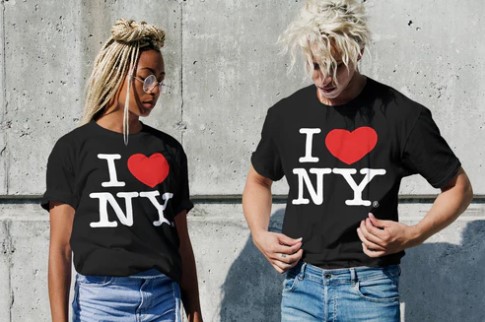I Love Ny Shirt
I Love Ny Shirt Designe
The logo has become a pop-culture icon, inspiring imitations in every corner of the globe. Merchandise proclaiming “I ❤ …” can be found wherever tourists gather. Parodies, such as “I ♠ [spayed] my pets” or “I ♣ [club] seals”, have also appeared.
Facetious expressions beginning “I heart…”, are based on a literal reading of the logo (e.G., the 2004 independent film I heart huckabees and the audio conglomerate iheartmedia). Nys-licensed pin-back buttons with a red version of the apple logo replacing the heart (I ny) were distributed at the 2001 macworld expo in new york.

I ♥ NY (1975) – Milton Glaser
The I love ny logo is so ubiquitous in new york today that it feels hard to imagine it actually being designed. Surely it has always been there, offering new yorkers and tourists the chance to proclaim their love for the city? In fact, the symbol was born in the mid-70s as part of an advertising campaign commissioned by new york state to increase tourism and also raise the spirits of the residents of new york during a particularly difficult period in the state’s history, when crime rates in new york city were at an all time high and the state was close to bankruptcy.
To help counteract this dire image, an advertising agency, wells rich greene, came up with a marketing campaign that was centred on the slogan I love new york. The campaign needed a logo, so william s doyle, then deputy commissioner of commerce for new york state, approached renowned designer milton glaser.
I Love Ny
Glaser had already found fame for work he’d been producing with push pin studios, which he co-founded in new york in 1954, including his psychedelic poster for bob dylan’s greatest hits album from 1966, and the masthead for new york magazine from 1968.
He had recently left push pin and set up his own studio in new york when he was approached by doyle to design the logo for the campaign (there are differing dates for when exactly the logo was commissioned, with glaser stating 1975, while other sources say it was designed in 1977 after the looting that occurred during a blackout in the city, which was seen as the decade’s lowest moment).
